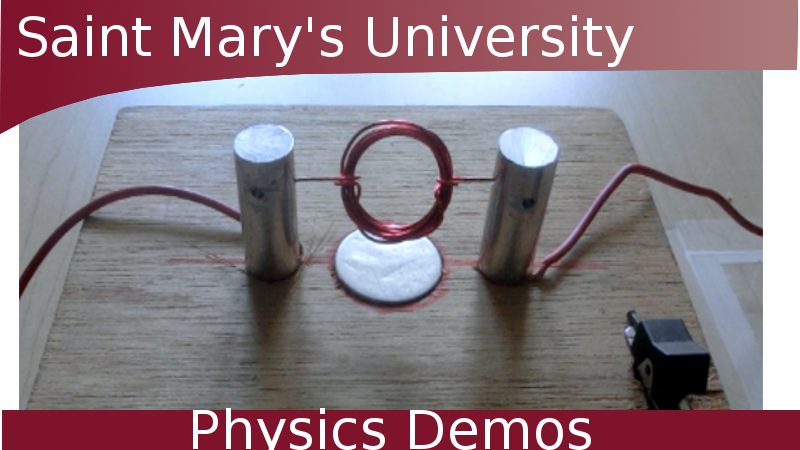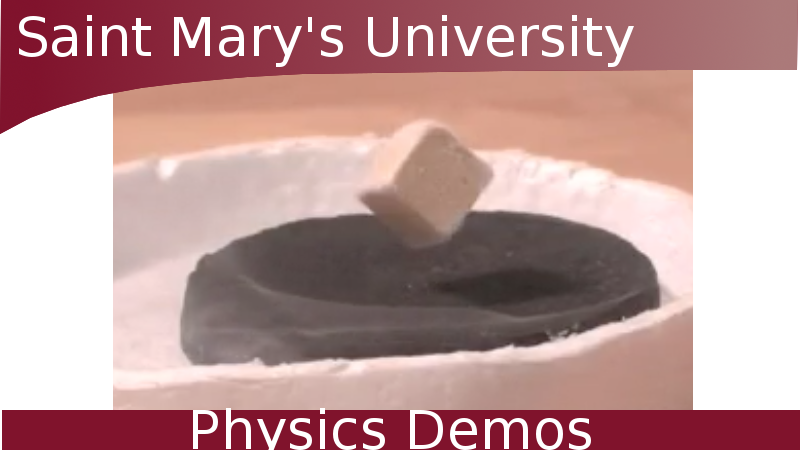The Wimshurst Machine produces sparks by means of electrostatic induction.
Other Demos of Interest:
- Electrostatic Induction
- Conductivity
- Electric Potential
Theory:
The Wimshurst machine, invented by James Wimshurst, is a device that uses electrostatic induction to produce an electric potential between two electrodes. The Wimshurst machine is composed of several key parts, which can be seen in the figures below:
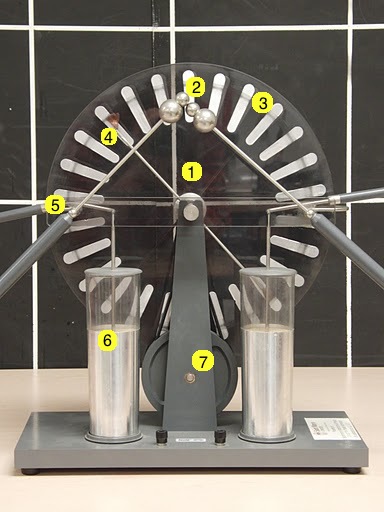
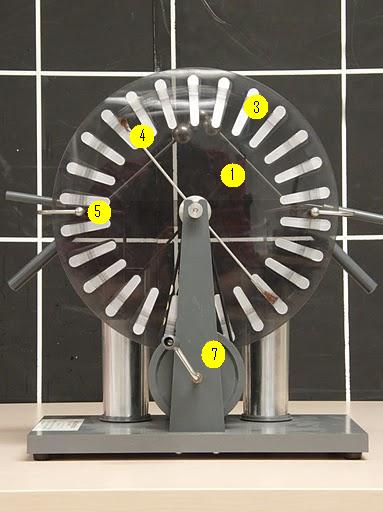
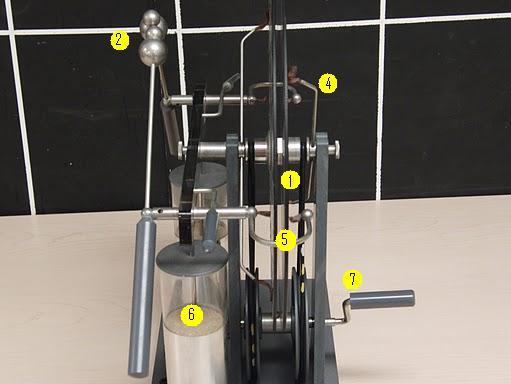
-
Dielectric disks
-
Electrodes
-
Conducting plates
-
Double-ended brush
-
Collecting combs
-
Leyden jars
-
Handle
The Wimshurst machine starts out with a small charge on one of the conducting plates. This charge generally comes from the environment, so the disks will not be perfectly neutral. If there was no charge to begin with, this machine would do nothing, as it needs a charge to induce a charge. This charge may be either positive or negative. For the purpose of explanation, we will say that the charge on the plate is positive.
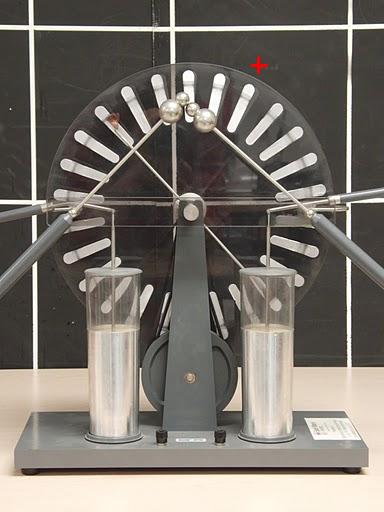
As the wheel spins, the positive charge will move towards the double ended brush on the other disk. When it aligns with this brush, it will induce a negative charge in the conducting plate directly across from it on the other disk. This negative charge will, in turn, cause a positive charge to appear on the plate on the other end of the brush.
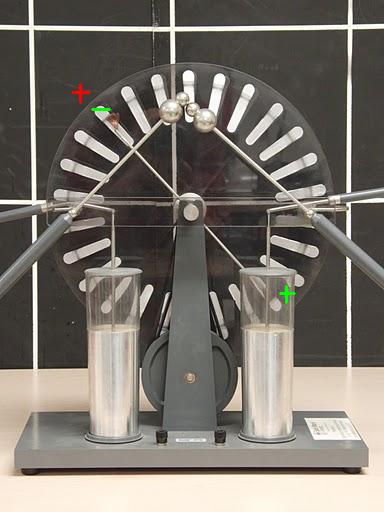
As the disks continue to spin, the original positive charge will reach the collecting combs on one side, and will then be stored in the Leyden jar capacitor. Meanwhile, the positive and negative charges on the other disk will be rotating in the other direction. When they line up with the double-ended brush on the opposite disk, they will induce a positive and negative charge on the conducting plates across from them.
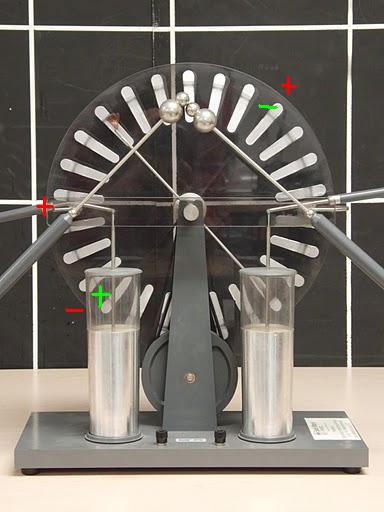
Those new charges will rotate until they align with the other double ended brush, inducing more charges, as the other ones reach the collecting combs and are stored. This cycle continues, with more and more charges being induced, and then stored, until it is discharged in the form of a spark! Then the whole cycle repeats.

- Wimshurst Machine
Procedure:
- Crank the handle of the Wimshurst Machine.
- Ensure the electrodes are a few centimetres apart.
- Watch the sparks!

